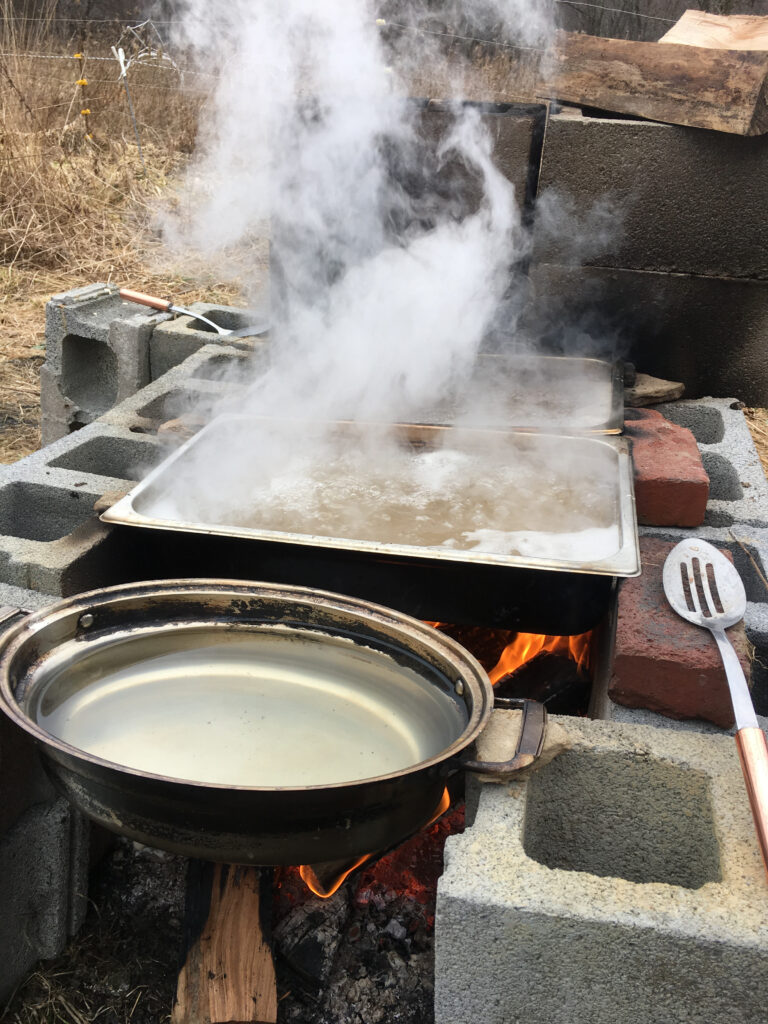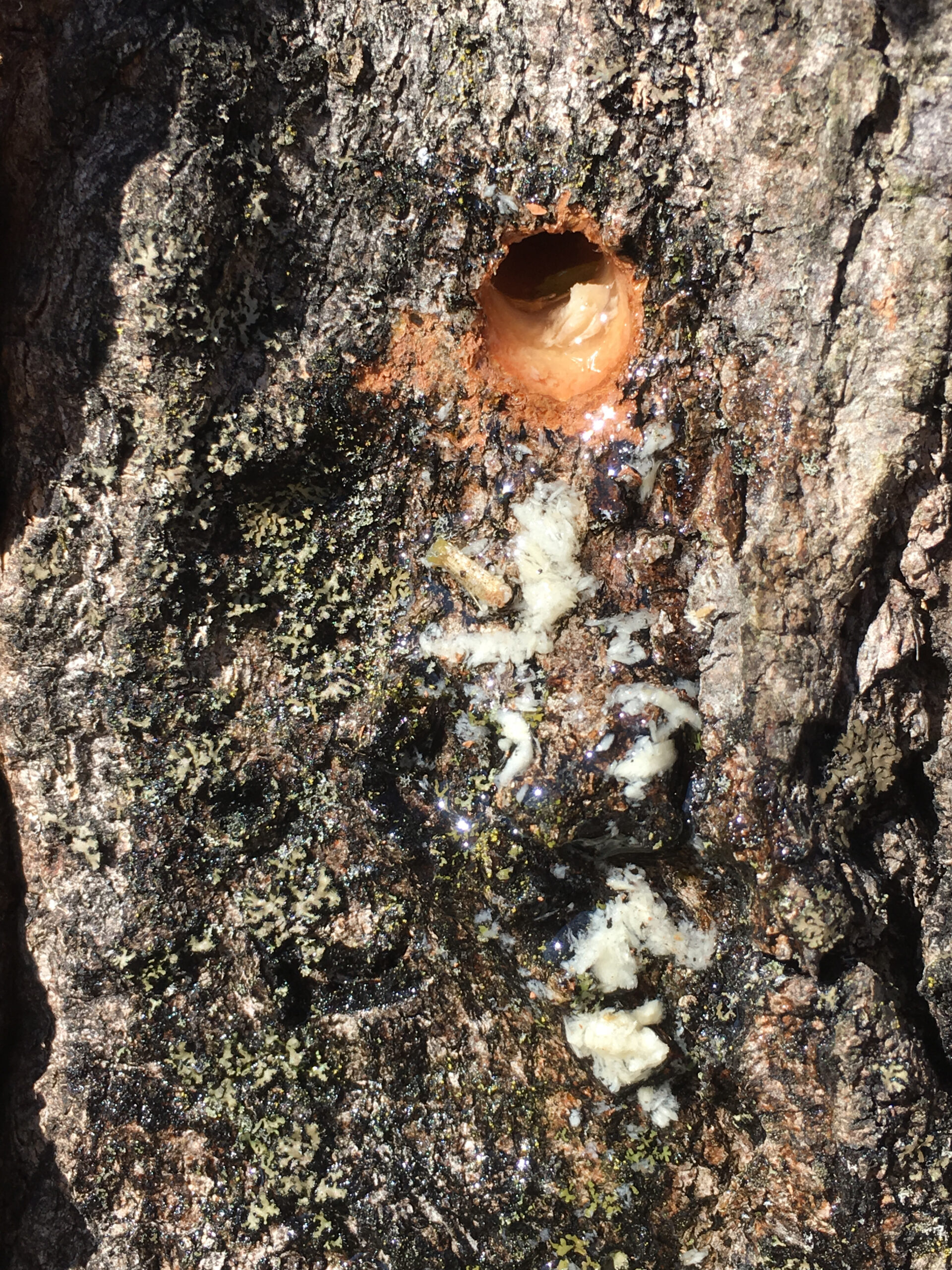By ALDONA BIRD
Newsroom@DominionPost.com
As the days warm up, maple sap flows through trunks and limbs of still dormant trees, bringing sugar from the roots to the branches.
If you have access to a maple tree and aren’t making your own maple syrup, you’re missing a golden opportunity.
Tapping trees and boiling syrup requires little specialized equipment, can be a fun activity for the whole family, and you’ll end up with delicious syrup.

To make maple syrup, you’ll need:
- Maple trees, at least 12 inches in diameter
- Drill and bit (7/16 or 5/16 bit most likely)
- Food-grade buckets or other containers
- Spiles (can DIY or buy)
- Firewood
- Cement blocks
- Stainless steel buffet trays or large pot
First, select your maple trees, and determine how many taps you’ll drill per tree. To avoid hurting your tree(s), only drill one tap if the tree’s diameter is 12-20 inches, two for 21-27 inches and three for a tree larger than 28 inches across.
Before you drill the taps, make or buy spiles — spiles are inserted into the tree to funnel the sap into your bucket or container.
To make your own spiles, cut a fan shape out of a metal pie plate, and roll up to fit into the drilled hole. It should be at least four or five inches long. You can also buy spiles in a variety of different styles.
Drill, using a bit the size of your spile, at a slightly upward angle and 2 to 2 1/2 inches into the tree (wrap a rubber band around the drill bit 2 1/2 inches from the tip to mark how far in to go).
Southern sides of the tree will often warm up faster, and yield more sap. Wherever you drill this year will not have sap next year, so note where your taps are to avoid the same spot and a vertical line up and down from it in the future.
Pick places to put your taps that will be convenient for placing a bucket underneath — if you are using a homemade spile, rather than one with a hose, it is usually best to put the tap just above the height of your bucket, so the sap can drip right in, and you can place a lid on top to keep rainwater and most bugs out.
Once you’ve collected a few buckets of sap (keep it cool and boil within a week of collection to avoid fermentation), pick a nice day to boil it down. Stainless steel buffet trays work very well to boil sap down in, although a large pot (or several), which are heavy enough to place over a flame, can work as well.
If using buffet trays (two or three are optimal), you can make an effective system stacking cinder blocks on three sides to create a rectangular fireplace to support the buffet trays on two sides. The third side should have an opening to act as a chimney, allowing smoke to escape.

Boil the sap, adding more as each pot or pan simmers down (keeping at least 2 inches of sap in the pans at all times to keep the pans from burning through), until you’ve reduced it to a deep amber color. This boiling should be done outside. If you do it inside, your kitchen walls and ceiling will be coated with a sticky layer of sugar.
Once you’ve significantly reduced the sap, you can bring it in for a final hour or so of boiling on the stovetop. Stop boiling the syrup when it reaches 219 degrees. It must be about 7 degrees above the boiling point of water to reach the sugar content needed for syrup.
To ensure preservation of your syrup, can it or keep it in the refrigerator.
The ratio of sap to syrup is 40:1 — so 40 gallons of sap will result in roughly one gallon of syrup. This varies slightly based on sugar content of the sap, which is weather-dependent. Weather conditions are ideal now for tapping. Daytime temperatures should be above freezing, with night temperatures below freezing.
Once you make your own syrup, you’ll never look at a stack of pancakes the same way.
Tweet @DominionPostWV




